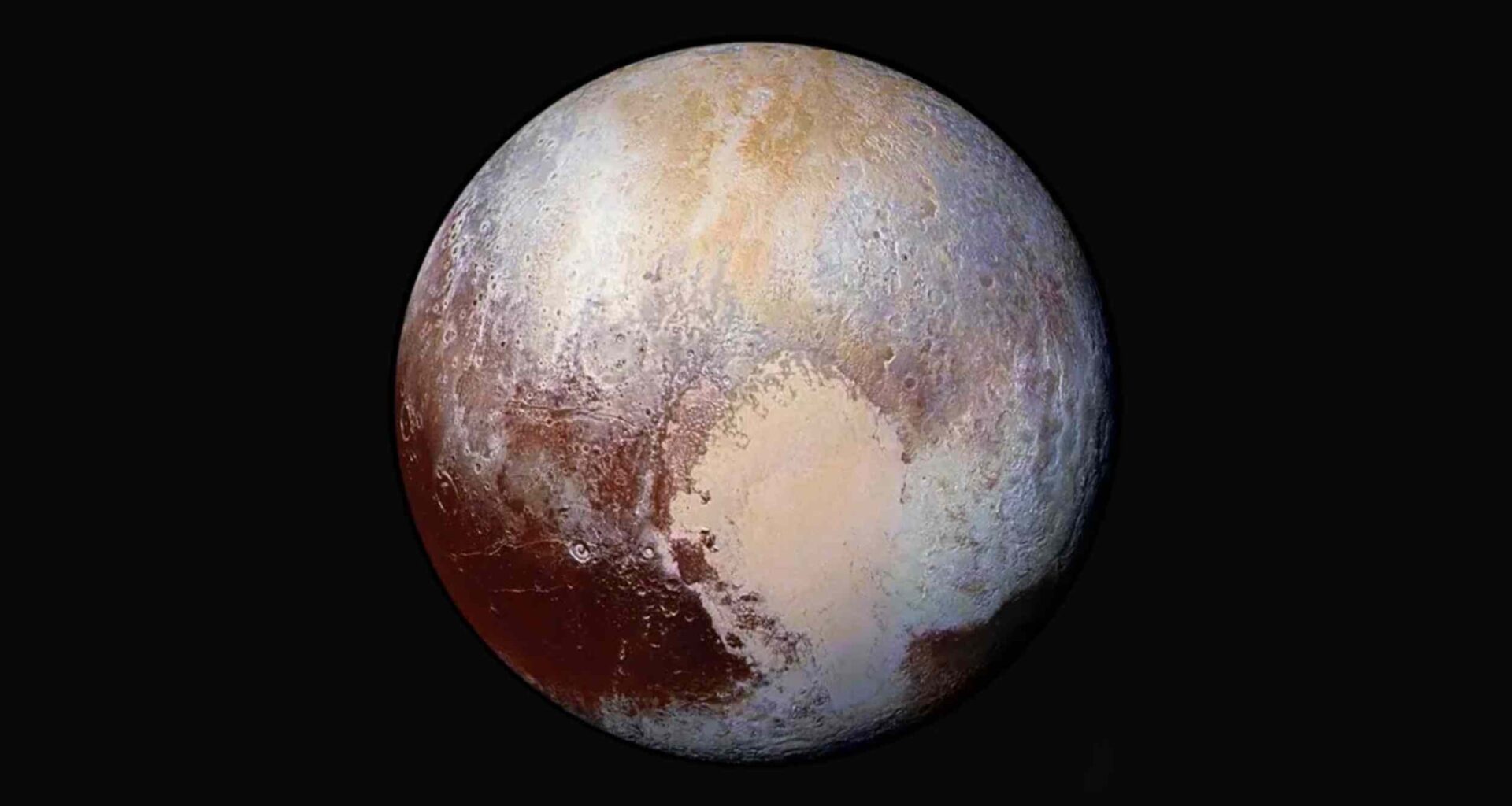Fresh data from the James Webb Space Telescope (JWST) has revealed that Pluto’s weather is run by a high-altitude haze, not by its thin mix of nitrogen and methane.
“This is unique in the solar system,” said Tanguy Bertrand, an astronomer at the Paris Observatory who led the analysis.
His team’s Webb observations show Pluto running a climate system that shares no obvious playbook with any other Kuiper Belt world.
Faraway Pluto gets stranger
NASA’s New Horizons spacecraft skimmed 7,800 miles over Pluto on July 14, 2015 and spotted nitrogen-ice plains, water-ice peaks, and a bright, heart-shaped basin called Sputnik Planitia. The flyby proved the dwarf planet is active, overturning decades of assumptions that it was a frozen relic.
The spacecraft also photographed a blue atmospheric shell that climbs more than 125 miles (200 kilometers) above the surface, stacking into at least 20 layers. Such altitude is extraordinary for a body smaller than Earth’s Moon.
Temperature readings near the top of those layers hover around -333 degrees Fahrenheit (-202 degrees Centigrade), roughly 30 degrees colder than gas-only models predicted. Researchers guessed the particles themselves were siphoning heat away.
Pluto’s haze becomes a thermostat
In 2017 Xi Zhang proposed that organic grains forged from methane and nitrogen absorb sunlight by day and dump it as infrared energy after dusk, effectively air-conditioning Pluto’s sky. The idea challenged the textbook view that gases alone regulate atmospheric temperatures.
Webb’s Mid-Infrared Instrument, tuned from 5 to 28 micrometers, finally had the sensitivity to test that prediction during a 2022 observing window.
Its 21-foot (6.4-meter) mirror separated Pluto’s glow from its moon Charon and caught the faint thermal shimmer expected from cooling haze.
Daytime grains soak up solar energy, but at night they radiate so well that the upper atmosphere loses heat faster than it gains it.
That cycle repeats each Pluto rotation, acting like an invisible pump that keeps temperatures stable yet frigid.
Splitting Pluto from its moon
Before Webb, telescope beams blurred Pluto and Charon together, making the haze signal almost impossible to isolate.
With higher resolution, Bertrand’s group measured separate light curves at 15, 18, 21, and 25 micrometers and traced the extra emission squarely to the dwarf planet.
Spectral fitting shows the grains resemble Titan-style tholins wrapped in thin films of hydrocarbon and nitrile ice.
These complex particles weigh almost nothing, yet their collective surface area overwhelms the cooling power of any gas molecule.
Charon’s curve matched a bare icy crust, confirming that its sibling lacks an atmosphere thick enough to complicate the reading.
By removing Charon’s contribution, the team settled a debate that had lingered since New Horizons sent back its first blurry thermal maps.
Hazy worlds other than Pluto
Bertrand adds that Neptune’s moon Triton and Saturn’s moon Titan also wear photochemical veils and might rely on similar haze thermostats.
If future Webb campaigns see matching thermal glows, scientists will need to rewrite more than one atmospheric handbook.
Exoplanet surveys already detect opaque hazes on mini-Neptunes and super-Earths, so lessons from Pluto could help decode alien climates.
Accurate temperature estimates guide the search for habitable zones and influence telescope time worth billions of dollars.
Closer to home, a planned Webb program will point at Triton late next year to hunt for a similar mid-infrared excess. A positive detection would clinch the case that tiny grains can dominate energy budgets across icy bodies.
What it means for early Earth
Climate models of the Archean Earth suggest a methane-rich haze may have blanketed the young planet, scattering sunlight and moderating surface warmth while the Sun was faint.
Pluto supplies a living analog, showing how sparse organic aerosols can still steer heat flow.
By tuning their models to match Webb’s data, geochemists can refine estimates for early Earth’s surface temperature and ultraviolet shielding.
Those tweaks ripple into theories about where and when the first biological molecules stayed stable long enough to assemble life.
Organic hazes absorb ultraviolet light and can slow the breakup of fragile molecules such as ammonia, giving nascent metabolisms a kinder surface environment.
Pluto’s data provide a reality check on how thick such blankets must be before they flip from warming to cooling.
Future questions
Because Pluto orbits the Sun once every 248 Earth years, JWST snapshots in 2022 and 2025 sample only the early stages of a long arctic winter at its north pole.
Scientists expect the haze thermostat to work even harder as the Sun dims, a forecast Webb will be able to test across the next decade.
Meanwhile, laboratory chambers on Earth are freezing methane-nitrogen mixtures to replicate the unusual grains and measure their emissivity.
Step by step, a haze once spotted as a pretty blue glow is turning into a textbook example of atmospheric physics.
Why this matters for climate science
General circulation models that include aerosol physics already show that fine particles can swing global temperatures by dozens of degrees on young Earth-like planets. Pluto serves as the first natural benchmark for those calculations outside the laboratory.
Aerosol feedbacks also influence geoengineering proposals, cloud microphysics, and the interpretation of exoplanet spectra.
With Webb’s detections in hand, modelers can tighten their error bars and policymakers can better weigh the planetary-scale consequences of tiny floating grains.
The same haze-cooling principle could even moderate supercritical atmospheres on distant mini-Neptunes, hinting that some worlds dismissed as too hot might hide temperate cloud decks.
Future space telescopes will look for the thermal fingerprints of those unseen aerosols when selecting targets that could harbor life.
The study is published in Nature Astronomy.
—–
Like what you read? Subscribe to our newsletter for engaging articles, exclusive content, and the latest updates.
Check us out on EarthSnap, a free app brought to you by Eric Ralls and Earth.com.
—–

